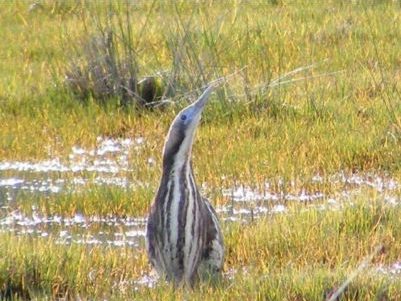It’s a world-wide trend and New Zealand is not immune. Wetlands are being lost – 90% of New Zealand’s wetlands have disappeared since European settlement.
“Freshwater swamps, bogs, gumlands, pākihi, fens, marshes and seepages, are estimated to have occupied 9% of the New Zealand land mass or 2,500,000 hectares prior to European settlement. It is estimated that 250,000 hectares of wetlands now remain, or 10% of the original extent, with much of the decline in extent due to drainage and clearing of wetlands for other land uses. Wetland conversion was particularly prevalent in lowland environments,” say DOC and Landcare Research scientists Hugh Robertson, Anne-Gaelle Ausseil, Brian Rance, Harley Betts and Eva Pomeroy in the introduction to their latest research paper.

Much of the drainage and clearances happened in early settlement days, but what many New Zealanders may not realise is that wetlands are still being converted to agricultural and forestry use today. The Resource Management Act (RMA) has been in place for almost 30 years. So what’s going on? Why isn’t the RMA protecting our remaining vulnerable wetlands?
The research, which has just been published in the New Zealand Journal of Ecology, investigates the extent of wetland loss in Southland where around 18% of our remaining wetlands are located, including an internationally significant RAMSAR site.
“We sought to investigate recent (post 1990) changes in wetland extent to determine if current rates of wetland loss remain a concern for natural resources management. Remote sensing images from 1990–2012 for three regions of Southland, New Zealand, were analysed to determine whether wetlands present at 1990 exhibited ‘little or no change’, were ‘at risk’ due to recent drainage, were ‘restored’ due to revegetation, or had been ‘lost’.”

The paper also evaluates the change in wetland extent on private and conservation land, to test the authors’ assumption that wetland loss would predominantly occur outside of conservation areas, given regulations to restrict the development of protected areas.
“Southland was selected as the study region due to the varied landforms present including montane basins, coastal lowlands and hill country. Southland is of national importance for wetland conservation as it contains 47,200 ha (~18%) of remaining inland palustrine wetlands in New Zealand. Prior to European settlement (c. 1850), the region is estimated to have supported over 450,000 ha of wetlands. The remaining wetlands in Southland are dominated by bog, fen, marsh and swamp wetland types.”
Particularly at risk are wetlands on private land that are not legally protected within reserves, conservation covenants or protected by specific statutory regulations.
“Of the 32,814 ha of wetlands assessed across Southland 3452 ha were no longer present in the landscape and a further 3943 ha were at risk. Most of the change in wetland extent occurred on the Southland Plains. A large proportion of the wetlands mapped as being lost or at risk were within the catchment of the Awarua Wetland, a large coastal Ramsar site.”
Awarua Wetland is situated on the southern coastline and includes estuarine habitat. It covers an area of approximately 19,500 hectares and is the largest wetland complex that remains in Southland
“The rate of wetland loss in Southland since 1990 (0.5% of wetland area per year) is equivalent to the global average (0.5% per year). Taking into account wetlands that have been partially drained, the rate of decline increases to 1.0% per year.”
As predicted, most of the wetland loss was outside of designated reserves.
“97% of wetland loss or degradation has occurred outside of conservation reserves, predominantly on private land. Between 1990 and 2012 there was a 45% decline of wetlands on private land, or 21% if excluding at risk wetlands. The 3% assessed as being within conservation areas, was largely an artefact of the geospatial data, in that information is lacking on the designation date of some conservation areas.”
Most of the lost wetlands have been converted to high-producing grassland, with some conversion to forestry also occurring.
“The Land Cover Database (LCDB), which maps land use across New Zealand, shows an increase in land under intensive agriculture (high producing grassland) in Southland by 8600 ha between 2001 and 2012. An increase in land used for dairy production was a key driver of this land conversion. The number of dairy cows in Southland is reported to have increased four-fold between 1995 and 2011, with 614,648 cows in 2011. Dairy farms have subsequently expanded from 87,109 hectares in 2000 to 195,500 hectares in 2011.”
In addition to wetlands that have been lost since 1990, further areas are considered to be at risk.
“The potential for ongoing wetland loss was also evident. A further 3943 hectares of wetlands were classified as ‘at risk’ due to presence of drainage and degradation of vegetation. The Southland Plains and Inland Southland sub-regions both had many wetlands vulnerable to further wetland decline. If the extent of wetlands no longer present and at risk are combined, to represent the overall decline in wetland habitat, a total of 7395 hectares has been impacted since 1990, which represents a 23% decline of wetlands between 1990 and 2012.”
So what about the other side of the coin – how much wetland restoration has occurred to counter those losses?
“Across the Southland study area, no areas of ‘restored’ wetland were detected.”
None!
The paper’s authors are calling for an urgent review of policy and enforcement that is meant to be protecting wetlands. If its happening in Southland, it could well be happening elsewhere too.
“Our study focused on Southland, as this region contains approximately 18% of all remaining wetlands in New Zealand, second only to the West Coast (34%). If the rates of wetland loss reported in Southland are occurring in other regions that support extensive wetlands, such as West Coast, Waikato, Northland and Otago, then national efforts to prioritise wetland conservation may have only been partially successful at preventing their decline. This suggests a review of regional and national policy for wetland drainage may be required, or increased efforts to ensure wetland policies and rules are being actively enforced.”
The full paper has just been published in the New Zealand Journal of Ecology and is freely available online.
Loss of wetlands since 1990 in Southland, New Zealand (2019)

